Broadcasters historically have tried to remain on the air during emergency events like major storms, earthquakes, and other forces of nature. Oftentimes, commercial power is interrupted, and thus, the backup power generator is installed. Propane-powered generators for medium duty (power up to 45 KW) are popular because of the decreased environmental hazards, availability and expense of fuel, and ease of maintenance and repair. This sized generator can run the critical loads of a studio facility or a transmitter site with TPOs between 5 and 10 KW.

Most propane generators use a gasoline engine modified to use propane. These generators can also use natural gas, however, because natural gas has slightly less energy, the generator’s service rating is reduced by about 10 percent.
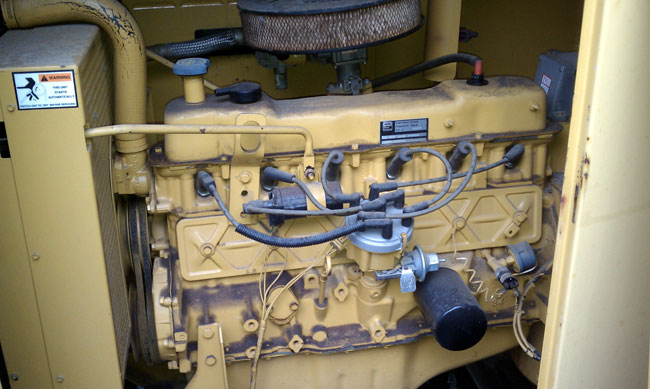
The biggest error I consistently see with propane generators is improper fuel tank sizing. It might seem just fine to plop a 500-gallon tank down next to a 45 KW generator and expect everything to be just fine. 500 Gallons may sound like a lot of fuel, but the more important consideration is tank vaporization, that is to say, how fast the liquid propane can be removed from the tank for use. Propane fuel companies should be able to size these things correctly, most of them have books and charts that tell what capacities and sizes are needed. However, as a general troubleshoot guide, the following information is provided:
Generator manufacturers will specify how many BTU per hour a generator will require under full load. If not, these are some conservative rules of thumb:
- For every 1 KW of electrical generation, 2 horsepower of the engine is needed*
- Under full load, each horsepower will consume 10,000 BTU per hour*
- Propane has 92,000 BTU per gallon
- Propane weighs 4.2 pounds per gallon
*Note: These are not the figures you will find in your engineering handbooks, they are adjusted for generator winding and engine efficiency.
Propane Tank Vaporization Rates (Continuous BTU/hr vs volume at tank temperature):
| Size propane in a tank (assumes 1/3 full) | Maximum continuous BTU/hr at degrees F | ||||
| 0° | 20° | 40° | 60° | 70° | |
| 120 | 129,600 | 188,640 | 247,680 | 308,160 | 338,400 |
| 150 | 146,880 | 213,790 | 280,700 | 349,200 | 383,520 |
| 250 | 253,800 | 369,400 | 485,000 | 603,480 | 662,700 |
| 325 | 321,300 | 467,670 | 614,000 | 763,900 | 838,900 |
| 500 | 396,270 | 567,700 | 757,300 | 942,240 | 1,034,700 |
| 1000 | 708,480 | 1,031,230 | 1,353,980 | 1,684,600 | 1,849,900 |
| 1450 | 816,120 | 1,253,400 | 1,645,690 | 2,047,550 | 2,248,480 |
Note: Tank vaporization depends on fuel level, tank temperature, and withdrawal rate. The above chart is a conservative generalization and represents a safe median value.
If a propane tank cannot vaporize fuel fast enough, the generator will begin to run lean, eventually overheat, and shut down. The vaporization rate depends on the tank temperature, which drops as fuel is withdrawn. For the above-cited 45 KW generator called to duty after a severe winter storm, the tank would need to vaporize: 45KW x 2 HP = 90 HP. 90 HP x 10,000 BTU/hr = 900,000 btu/hr. A 500-gallon tank is too small for that size generator.
As the tank temperature drops a propane tank can develop frost on the outside of the tank, even on a hot summer day, which compounds the problem.
The correct size tank for a 45 KW generator is 1000 gallons. This can also be two five-hundred-gallon tanks connected in parallel via a high-pressure line.
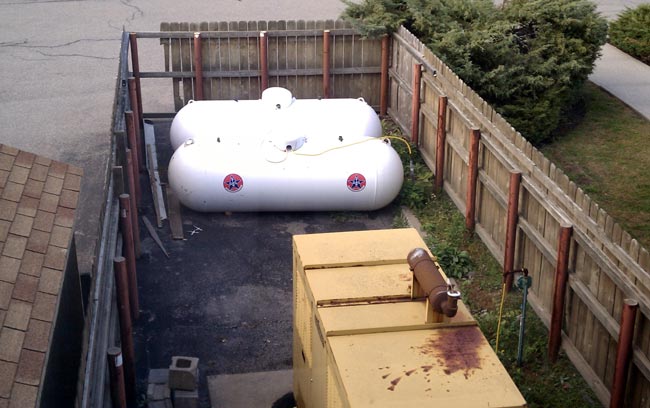
Also note, the generator’s radiator is facing the tanks so that when the unit is running, hot air is blowing on the tanks, warming them up. This particular generator is about 25 years old, which is why it looks a little worn. It still carries the load and mechanically is in sound condition.
Most propane fuel systems have two regulators; one high-pressure regulator on the tank, which takes the variable tank pressure and steps it down to about 10 PSI, and the vaporizer which steps the pressure down to a few ounces per square inch (or inches of water column) and adds air creating propane gas for the generator to burn.
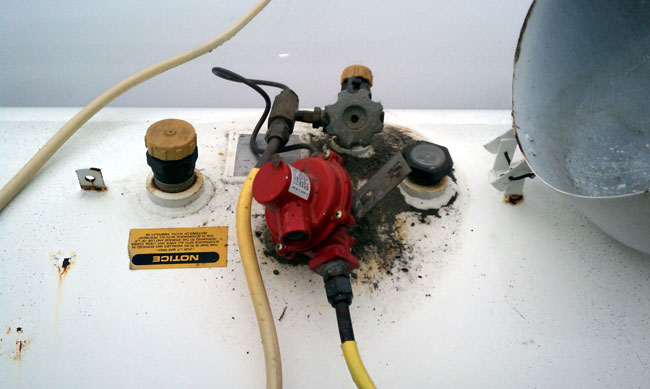
It is important that the vaporizer be mounted above the snow line and that there is a little screen on the air intake, otherwise, mud wasps will build a nest in the air intake and the next time the generator is required to run, it won’t start.

Fuel piping is also a concern, if the low-pressure lines are not large enough to handle the required BTU, the generator will run lean, creating the same problems as an improperly sized tank. Different piping has different capacities, see the following charts:
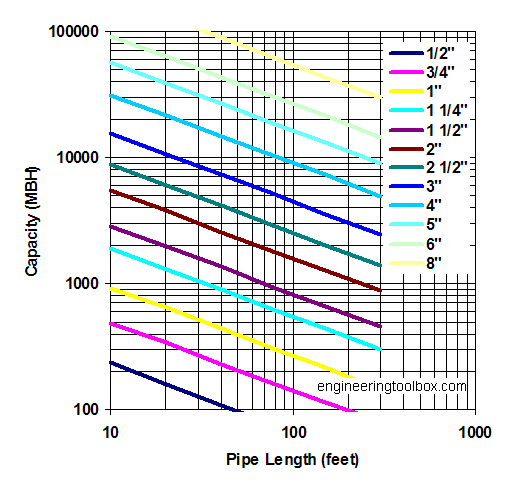
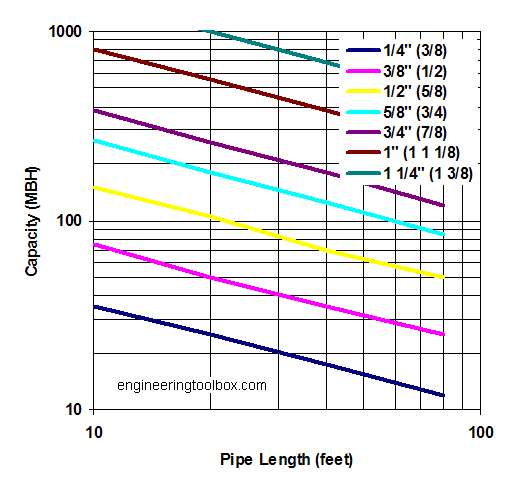
Assumes pressure less than 1.5 PSI, one MBTU is equal to 1,000 BTU per hour.
Once the generator is installed, maintenance is required. As a minimum:
- Exercise the engine bi-weekly for 15 minutes. Propane generators do not need to run under load.
- Check fuel, oil, and antifreeze levels monthly, more often if heavy use.
- Change the oil, oil filter, and air filter, and check the antifreeze freeze point, and battery electrolyte specific gravity yearly
- Change out belts and hoses as needed, and pay close attention to the block heater hose, this is where leaks often develop
- Clean out mice nests and droppings as needed
Mice love generators.




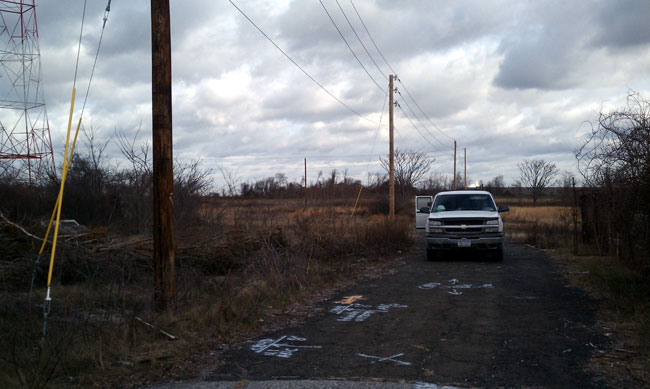
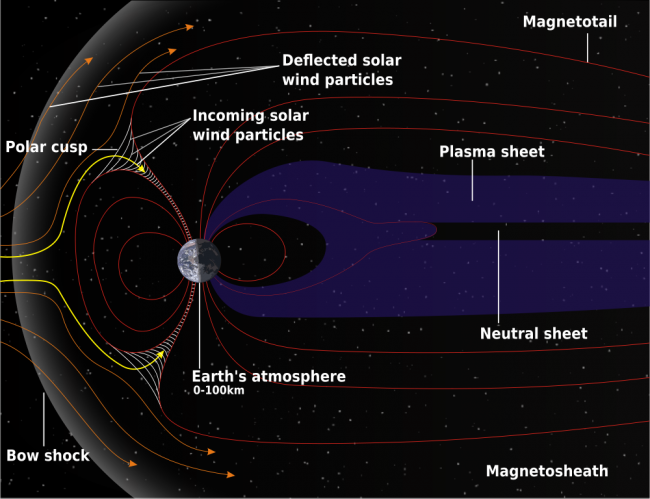
Yet another reason I love this site. Any engineer who can use “mud wasps” when talking about a radio engineering problem is just, well, over and above.
Or you could just pull off the fuel as liquid and place the vaporizer at the engine. In this configuration, a coolant loop runs through the vaporizer and provides the heat to create the conversion in state. If your block heater is working as it should, you should never have a problem at any rate of draw provided the piping is the right size.
This is how 2 of my sites are set up.
A good article, but Vaporizers can be dangerous, especially if the generator is indoors. To me the best system is to keep it simple by using a large tank as the moderator has mentioned, so that there is enough LP gas “boiled off” sitting on top of the liquid propane inside the tank. At latitudes in New York state, I do not believe it would ever get cold enough with a 1000 gallon tank running a 45 kW set to necessitate a vaporizer. Maybe in the Northwest Territory of Canada or Alaska, but not in New York or New England for that matter. A 45 kW genset with a 1000 gallon LPG tank should be fine for a continuous load of 150 Amperes at 240 Volts single phase at ambient temperatures down to -30 degrees Fahrenheit for a period of at least 5 days. We use yellow flexible (AGA rated) PVC piping of 1 inch diameter from the tank regulator to a secondary regulator adjacent to the engine set at an 11 inch water column. We exercise our Katolight’s manually monthly and all of these are indoors so that they are not bothered by being out in the elements. Our 45 kW Katolight’s have 350 CID GM V-8 industrial engines which are slightly beefed up Chevy 350 V-8’s coupled to Marathon Electric (Wausau, WI) generators. The one pictured appears to be an old model and I amazed it is a Ford! They had used Hercules in-line 6 cylinder engines prior to the deal they cut with GM back in the ’90’s.
Once again great reading ! Am I wrong or is that a 3.0 liter (approx. 183 cu in according to Google) engine which were used on Ford Mavericks ? I don’t know about the Mavericks in the USA, but they were built with 6 and 8 cyl. engines in Brazil, and by 1978 Ford even sold them with 4 cyls. engines. My dad had a 1973 Ford Maverick which engine looked just like that in the picture.
The 240 cu. inch Ford in-line Six was used in full-size Ford sedans, station wagons and light trucks. The base Maverick used smaller, cheaper designed 170 and 200 cu. inch straight 6’s similar to ones used in the earlier Ford Falcon and Mercury Comet compact cars of the early ’60’s. A 250 cu. inch straight 6 was added as an optional engine later, The 240 cu.inch straight 6 was an early design and similar to the later 250 cu.inch 6. Many larger 300 cu.in. in-line 6’s were made in Brazil for the larger Ford trucks, primarily the “Louisville”. The difference between the 240 and the 250 is mere “punch-out” but the blocks are much different than the 144, 170, 200 (cheapies), and the large venerable 300 cu.inch Ford truck engines.
Coolant heated vaporisers and liquid supply has been standard industry practice since the 70s for automotive LPG conversions here in Australia. In recent years computerised liquid injection has become the buzz word. Either way LPG and petrol vehicles share equal insurance premiums. You would be lucky to find an urban taxi that is not on LPG.
A typical older style install showing the coolant pipe work etc:
http://gallery.oldholden.com/d/77094-5/DSCF1302.JPG
Unlike Australia, here in the United States, we have NFPA 58 (National Fire Protection Association) codes covering hazardous gaseous fuel installation, storage and usage. The states adopt these codes in order to establish uniform safety standards throughout their jurisdictions. Effective July 1, 2011 major revisions in this code will dramatically affect many FIXED CNG/LPG/LBG gas installations, and there will be NO grandfathering!
I find it interesting that with all the attention to tank size he show a picture of a system with a VERY undersized line between the green second stage regulator and the generator. His own sizing charts show a 1″ pipe is needed for a 900kbtu load and you can see they are using 1/2 tubing on the low pressure side. Also, that red first stage is undersized for cold weather performance. Its good for 1 million btu with 30 psi in the tank and then only with 8 psi outlet pressure. Which would lower the btu rating on the second stage. Luckly many generators are designed with the lower natural gas pressures in mind and have minimum inlet pressures around 7″ much lower than propanes standard 11″. But I wouldn’t recommend designing a system on that assumtion
I have a whole house LP generator that recently will not start below 32 degrees. if the temp is above 32 it starts without a problem. There seems to be a small amount of water somewhere causing the problem. Could there be something wrong with the regulator nearest the generator?
I know its been 7 years since your post, but here goes. If its a Generac, take out the air filter and see if there is frozen condensation in the bottom of the filter cavity. Remove it and check it often. It will build up in there and freeze when 32 or below. Have a nice day.